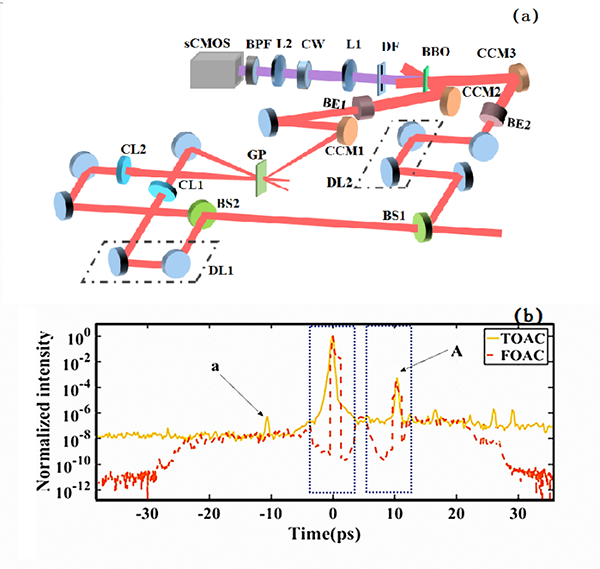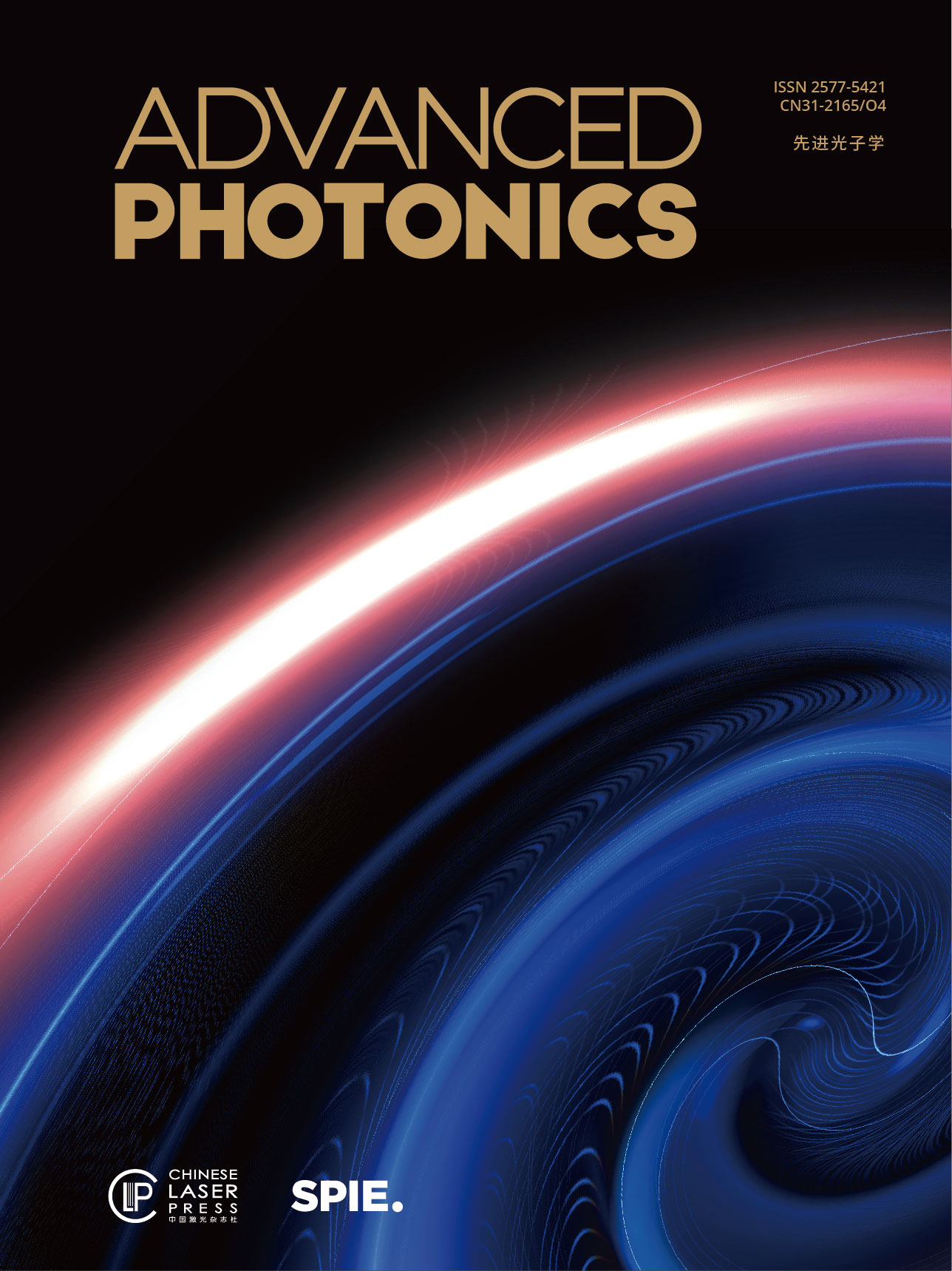Ultra-high intense laser pulses have been applied in the field of laser-matter interaction, such as proton or electron acceleration in thin solid targets and electron generation in fast-ignition inertial confinement fusion. State-of-the-art high-power laser systems can produce intense pulses with peak powers of 10 PW. The 100-PW level laser system with focal intensities of 1021 – 1024 W/cm2 is expected in the near future. For the PW laser pulse, the temporal contrast is one of the most important parameters since the prepulse noise has disturbing influence to the laser-matter interaction. Thus, the temporal contrast measurement for the ultra-intense laser pulse is critical. Since the PW laser systems are operated at low repetition rate, the single-shot measurement is necessary.
Although many techniques have been developed to improve the temporal contrast of ultra-intense laser pulses, limited methods were developed for the temporal contrast single-shot measurement. So far, typical method is still the third-order auto-correlator (TOAC). In the TOAC, ghost prepulses will be introduced by the strong postpulses of the sampling pulse. Furthermore, the group velocity mismatch (GVM) between the sampling pulse and the test pulse will influence the time resolution. The best results were obtained in 2014 by using this method, with a dynamic range of 1010, a time window of 50-ps and a time resolution of 700-fs. In 2017, the elf-referenced spectral interferometry with extended time excursion (SRSI-ETE) was developed with as high as 20 fs time resolution, while only 108 dynamic range and 20 ps time window.
Recently, researchers at Shanghai Institute of Optics and Fine Mechanics, Chinese Academy of Sciences propose a novel and simple method single-shot fourth-order auto-correlator (FOAC), in which the sampling pulse with high energy is generated by a frequency-degenerate third-order nonlinear processes and the correlation signal is generated by a sum-frequency generation process with large crossing angle and then captured by using a 16-bit sCMOS. The clean sampling pulse owning to the third order process guarantees a high measurement fidelity. The identical central frequency between the sampling pulse and test pulse eliminates the influence of the GVM. As a result, high time resolution is obtained together with an sCMOS as the detector. The proof-of-principle experiments show that a dynamic range of approximately 1011 compared with the noise level, a time resolution of approximately 160 fs, and a time window of 65 ps can be successfully obtained. Furthermore, the temporal contrast of laser pulse from a PW laser system is successfully measured in single-shot with a dynamic range of about 2×1010 and simultaneous a time resolution of 160 fs. Related results are published on Advanced Photonics Vol. 1, Issue 5 (Peng Wang, Xiong Shen, Jun Liu, Ruxin Li. Single-shot fourth-order autocorrelator[J]. Advanced Photonics, 2019, 1(5): 056001).

(a) Schematic representation of the proof-of-principle experimental setup using FOAC for single-shot temporal contrast measurement. (b) The comparison of the TOAC and FOAC measurement results.
The novel single shot FOAC would contribute to the optimization of the PW laser system and analysis of the ultra-high intense laser-matter interaction research activities. In the future, the researchers aim to obtain higher dynamic ranges by increasing the correlation signal energy and sensitivity of the detector, and combining the temporal contrast reduction techniques.


